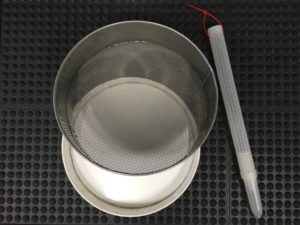Determining stored pest status in a silo full of grain can be a bit like finding the proverbial needle in a haystack, but a pilot study by the Queensland Department of Agriculture and Fisheries on two farms in Southern Queensland indicated that a combination of sampling methods may provide a more accurate picture of pest species present.
Increasing on-farm storage comes with an increasing risk of insect infestation, and simple, safe, cost effective and easy to interpret sampling methods will help farmers manage this risk, make informed decisions about pest management, and minimise marketing delays.
Temperature and humidity can vary widely in the silo headspace, potentially becoming lethal in the middle of the day. Visual inspection of the grain surface is therefore likely to be less consistent than sampling within the grain, where conditions are more stable.
The study, using sieving of grain samples from the top and bottom of the silo and insertion of probe traps at different silo access points and grain depths, found that beetles were most likely to be found in sieved samples from the bottom rather than the top of the silo. When using probe traps, beetles were more likely to be found via the centre top hatch rather than the side hatches. Probes also collected more beetles in shallow versus deeper traps.
Sampling recommendations from this pilot study:
- If sieving, start with samples from the bottom of the silo.
- If placing probe traps, start at the centre hatch and insert until the top of the trap is level with the grain surface. Check after 24 hours.
- If assessing visually for beetles on the grain surface, early morning may be best.
This study made some useful first steps towards providing growers with effective sampling methods, however some key questions need answers before more comprehensive recommendations can be made. For example:
- Are different methods needed for different pest species?
- What does it mean if one beetle is detected or many are detected?
- Is the answer the same soon after harvest or later during storage?
- Are the results from this pilot study applicable to other regions?
More information on this research is available in the GRDC update paper (June 2016) Finding storage pests early

